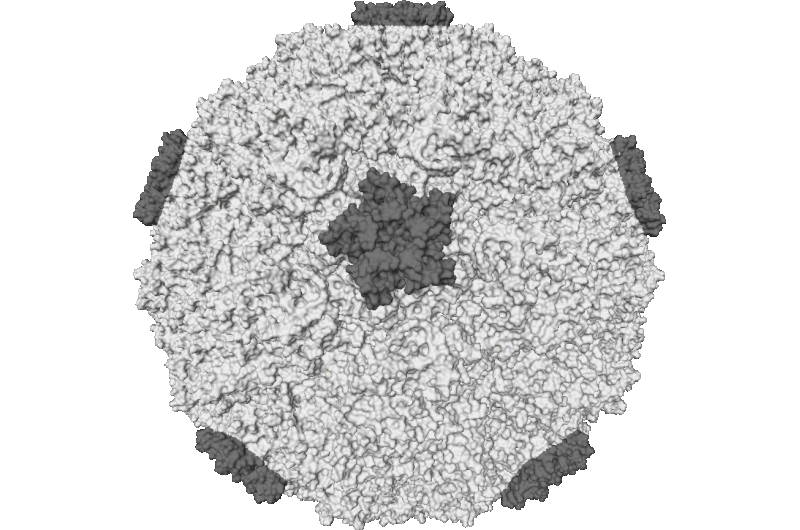Achoo! The distance germs can travel is nothing to sneeze at

We all do it. Some of us do it quite loudly. Others do it not once, but several times in a row. Sneezes are everywhere these days, during this, the height of cold and flu season. The chorus of achoos in offices, on buses and in homes often sends bystanders scrambling to get out of the line of germ-spreading fire.
But how far is far enough away to avoid getting hit by a snot-and-fluid projectile? A lot farther than you might - or would like to - think. We're talking 20 feet or more.
The question of what constitutes an achoo-safe zone has long intrigued sneeze-ologists, better known as doctors, nurses and medical researchers working to prevent the spread of contagious diseases.
Recent research, however, offers new insights on the science of sneezing - revealing what happens when we sneeze and how far the spray of saliva and mucus can travel.
A sneeze is a reflex reaction, explained Dr. Scott Davies, a physician at Hennepin County Medical Center in downtown Minneapolis who specializes in treating respiratory diseases. It happens when receptors in the nose detect irritants. It can be an odor, such as perfume or smoke. It can be pollen in the air or pet dander - any type of allergen, really. For some people, cold air or sunlight can trigger the sneeze reflex. Once the nose receptors sense the irritant, the brain receives a signal and the body responds involuntarily.
"That reflex triggers a violent reaction that involves your neck, the chest, the abdomen, the diaphragm," Davies said. "You create this forceful blast of air through your nose."
The air comes from your lungs, and there's a deep inhale just before the sneeze to produce a large gust of air.
"Kind of like when you're blowing out a candle," Davies said.
So what purpose does sneezing serve?
Cleansing, said Jeanne Pfeiffer, an associate professor at the University of Minnesota School of Nursing and longtime expert in infection prevention and control. Think of it as your body spotting a squatter in the nose that needs to be evicted. The more someone sneezes, the more likely that pesky freeloader is still there. Hold the pepper.
Sneezing helps reset the environment inside the nose, allowing troublesome particles inhaled through the nose to become trapped in the mucus lining, according to a recent study conducted by researchers at the University of Pennsylvania in Philadelphia.
For a long time, people on the front lines of sneeze science thought that the droplets scattered from a sneeze traveled only a short distance - a couple of feet, perhaps. But a slow-motion video of a sneeze captured recently by Massachusetts Institute of Technology (MIT) researchers uncovered a far more troubling truth: Those sneeze particles can go mighty far.
The video shows in gross detail what happens to the liquid mixture spewed from a person's mouth and nose during a sneeze.
The findings, as described by MIT researchers in the New England Journal of Medicine, show that the droplets spread farther than previously thought - aided by a swirling puff cloud.
"The largest droplets rapidly settle within [about 3 to 6 feet] away from the person," wrote lead researcher Lydia Bourouiba, of MIT's Fluid Dynamics and Disease Transmission Laboratory. "The smaller and evaporating droplets are trapped in the turbulent puff cloud, remain suspended, and, over the course of seconds to a few minutes, can travel the dimensions of a room and land up to [19 to 26 feet] away."
So what, then, is your best defense against contamination from a nearby sneeze cloud?
"You can't scamper. It's over before you can move," Davies said. "It's up to the person who's sneezing to prevent this."
Pfeiffer recommends giving some space ahead of time to avoid getting sick.
"We say distance is a barrier," she said. "When someone isn't feeling well but they're not staying home, we like to keep 3 feet of distance."
Back in the day, disease prevention gurus taught us to cover our mouths with our hands when we felt a sneeze coming on. That method, while better than an open-mouthed sneeze, is no longer the preferred method. That's because once your hand is wet and germy, it is easy to transfer those germs to surfaces such as keyboards, pens and doorknobs - spreading sickness from person to person.
Pfeiffer and other health professionals now recommend sneezing into a tissue or into our elbow.
Sneezes can travel as fast as 100 miles per hour, by some estimates. And the force of a sneeze? Well, that's nothing to sneeze at, either. Davies said while it's extremely rare, some people have even been injured from sneezing hard.
"You can break a rib sneezing," he said.
©2017 Star Tribune (Minneapolis)
Distributed by Tribune Content Agency, LLC.




















